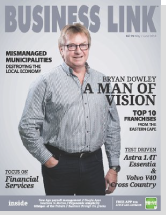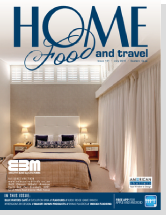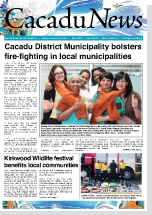Nelson Mandela Bay households earn more and spend less
The latest Consumer Spending in the Eastern Cape research report released by the Economic Planning Directorate of the Eastern Cape Department of Economic Development, Environmental Affairs and Tourism (DEDEAT) last week showed that the province’s disposable income (which is household income less taxes) in 2013 was R136 billion, of which consumers spent R133 billion and saved more than R3 billion.
Nelson Mandela Bay and the Sarah Baartman District show the highest proportion of remuneration in household income at 61%. For the province as a whole, 57% of total income in 2013 came from remuneration while 43% was made up of unearned income which shows the high level at which Eastern Cape households still rely on state support.
Worryingly, this amount has increased by 8% over the last 10 years, up from 35%.
One of the biggest surprises is that the district showing the greatest household income and consumption figures is not one of the two major metropolitans of Nelson Mandela Bay and Buffalo City, but the historically disadvantaged OR Tambo district municipality based in Mthatha.
In 2013, consumption expenditure in OR Tambo reached R45 billion and in Amathole, which statistic information for 2013 includes the Buffalo City Metropolitan Municipality, it was R32 billion.
Nelson Mandela Bay Metro was third with R26 billion.
The change in OR Tambo is the most dramatic. Ten years previously in 2003, OR Tambo households spent only R14.7 billion, showing a massive 67% increase over the decade.
However, OR Tambo district still relies most heavily on unearned income in the province at 45%. Unearned income is mainly income from state aid compared with income from remuneration.
The Dedeat research report shows that most of Eastern Cape’s spending is on services at 39% (which includes rent, transport, recreation, communication and medical services).
The second biggest slice of 35% goes to non-durable goods, while only 13% is spent on durable and semi-durable goods like food and clothing.
Provincially, R8.8 billion was spent on personal transport equipment and a further R3.5 billion on recreation and entertainment with furniture and appliances following closely behind at R3.4 billion.
The amount of money spent on clothing and footwear, totalled R11.4 billion, far greater than the R2.9 billion spent on household textiles, furnishing and glassware.
People in the Eastern Cape spent R12 billion on transport and communication and R10.3 billion on rent and only R5.7 million on educational and recreational services
Not surprisingly, a large slice of R29.9 billion was spent on food, beverages and tobacco with only R2 billion spent on medical and pharmaceutical products.
Expenditure on appliances in the Eastern Cape is mostly on fridges and freezers, with R274 million spent on these. Next is expenditure on stoves, ovens and microwaves with R183 million.
-source getnews
Related Stories
The lawyers representing former Paralympian, Oscar Pistorius, whose release on parole, ten months into his five-year sentence, was suspended at the 11th hour in August, now have until next Thursday to file heads of argument for his upcoming appeals case. Just before his release in August, the Ministry of Justice...
The Grahamstown High Court has sentenced a 25 year-old...
The International Criminal Court (ICC) has reportedly questioned South Africa's...
Masifunde Learner Development is expected to officially unveil Walmer High...
Eastern Cape MEC for Economic Development, Environmental Affairs and Tourism...
In a statement posted on a local blog, Democratic Alliance...
August was the worst month for global markets since May 2...
According to Eastern Cape police, their members at Msobomvu...
Following on from the launch of the much anticipated...
The Hawks in the Eastern Cape have launched a manhunt...

















